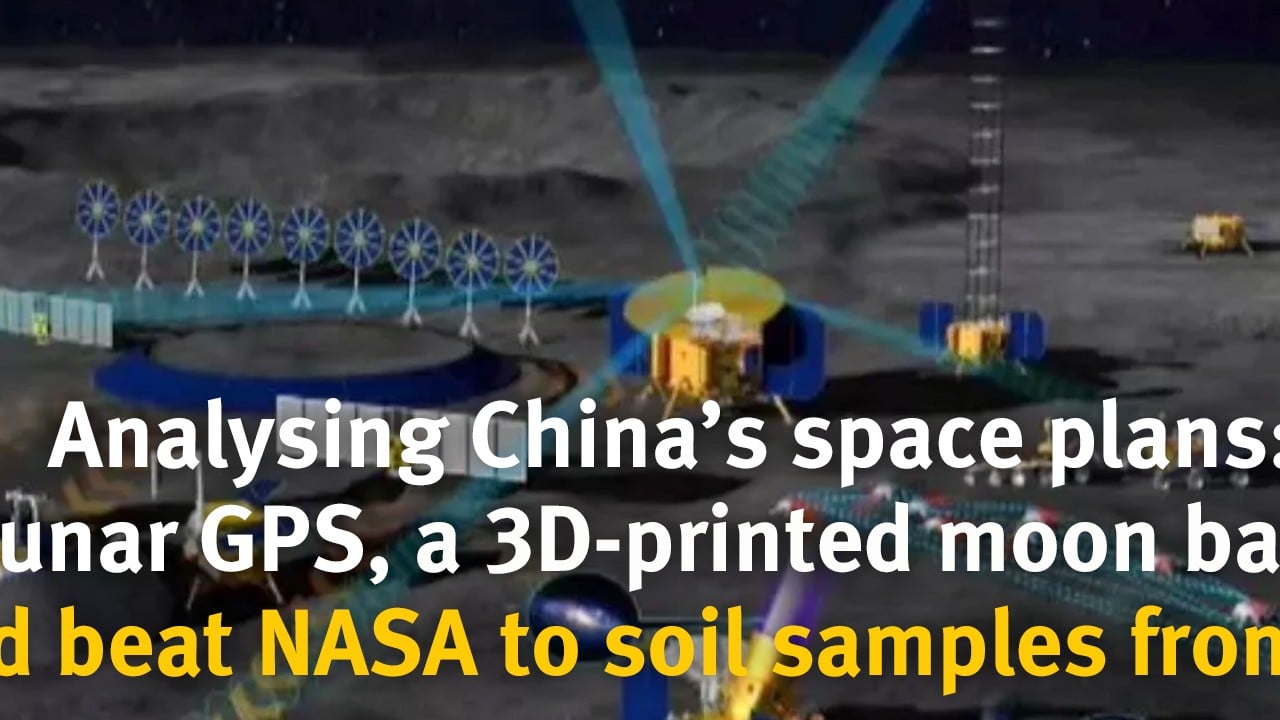
To the moon and back: China reveals first details of crewed lunar landing mission by 2030
- Lunar lander and crewed spacecraft to be sent on separate rockets for rendezvous and docking in orbit, senior engineer at Chinese space agency says
- China aims to be only the second country to land humans on the moon after the US, whose Apollo mission used one rocket for both lander and crew craft
If successful, the mission would make China only the second country after the United States to have achieved the feat.
China will use the lunar orbit rendezvous (LOR) process for the mission, state media reported, citing a senior engineer at the national space agency.
The Chinese LOR process will be similar to that adopted by the US Apollo programme more than half a century ago.
But unlike the Apollo mission, which used one rocket to carry both the moon lander and the command spaceship into lunar orbit, China will be sending them aboard two separate rockets.
Zhang Hailian, deputy chief engineer at the China Manned Space Agency’s Engineering Office, said the lunar lander and crewed spacecraft would be sent separately for rendezvous and docking in orbit, state broadcaster CCTV reported on Wednesday.
The astronauts will then move from the command spacecraft into the moon lander and descend to the lunar surface, Zhang was quoted as telling a space forum in China’s central city of Wuhan.
After carrying out scientific investigations and sample collection, the crew will board the lander again to ascend to lunar orbit, where they will rendezvous and dock with the command spacecraft for the return journey to Earth, Zhang said.
Chinese researchers are developing the Long March 10 heavy carrier rocket, a new generation of manned spacecraft, a lunar lander and a crewed lunar rover for the mission, he added.
The process described by Zhang in a presentation to the forum was largely expected, after being adopted by the Apollo programme in the 1960s and 1970s, as it is the most economical way to send humans on a round-trip to the Moon.
The process allows for maximum payload saving, as the bigger command and service spaceship remains in orbit, and only needs to carry fuel for the lightweight lunar lander’s descent and ascent.
The Apollo astronauts separated the spacecraft from the powerful Saturn V rocket after entering the moon’s trajectory, and then travelled on it for three days until they reached lunar orbit. But China’s process would see the spacecraft and the lander enter the lunar orbit directly on board their respective rockets.
In both processes, after completing the lunar mission, the lander is discarded following the transfer of crew and payload.
Apart from repeating China’s plans to land a crew on the moon before 2030, Zhang also underlined its aim to set up a research station to conduct “systematic and continuous lunar exploration and related technology [tests]”.
China unveils construction road map for lunar research station
The Chinese space agency is collaborating with Russia’s Roscosmos to build a joint moon base by the mid-2030s.
A moon landing concept picture presented in December by Wu Yansheng, chairman of the China Aerospace Science and Technology Corporation, the country’s main space contractor and builder of rockets including the Long March series, showed China was likely to send three astronauts for the moon-landing mission.
Two of them are likely to travel on the lander to set foot on the moon, while the third would be piloting the command and service spaceship in lunar orbit, the picture suggested.
China has made major progress in its moon probes since launching its first orbiter, the Chang’e 1, in 2007. The latest in the series, Chang’e 5, was launched in November 2020. It landed a rover on the moon on December 1 that year and returned to Earth with 2kg (4.6lb) of lunar soil two weeks later.
The US also aims to restart crewed moon missions to the moon this decade under Nasa’s Artemis programme, which would be its first lunar landing since 1972, and is also planning for a crewed mission to Mars.


